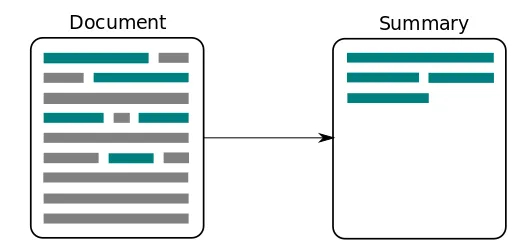We are drowning in information in the digital age. Every day, we find ourselves bombarded with articles, documents, and hundreds of websites. It is difficult to extract the essentials from this flood of data. But it’s not something that you need to panic about; machine learning is here to drag you out of this flood smartly.
Machine learning plays a crucial role in navigating the information maze. This allows you to condense a lengthy piece of text into a succinct summary. Let’s explore this amazing topic further to elaborate on the role of machine learning in generating summaries.
Understanding Text Summarization
Text summarization, in its essence, is akin to magic. Summarization can be done in two ways, or you can say, the summary has two types:
- Extraction or Extractive Summary
- Abstraction or Abstractive Summary
Extractive summarization works like a diligent editor who reads lengthy documents and texts and then picks out key sentences from the source text. And finally, compile them together to generate a summary.
The abstract summary, on the other hand, is similar to the work of a writer. It reformats and restructures text in order to generate fresh yet accurate and summarized content.
Machine learning can deal with both types of processes smartly. How? The question will be answered in the coming paragraphs. Keep reading!
Basics of Machine Learning For Summarization
Let’s delve a little deeper now. Machine learning is the wizard behind the curtain, my friend. In the conventional summarization process, there are certain steps that are followed by the summary generator or software to generate an extractive summary.
First of all, paragraphs are split into sentences and text processing is done based on algorithms. Then starts the tokenization process and then based on frequency, position, weight, and occurrence, tokens are extracted and then sentences are arranged in order to generate an extractive summary.
Abstractive summarization adds another step here. It gets the extractive summary and using Machine Learning and Natural Language Process models rephrase the summary to make it more narrative in style and better in tone.
Machine learning leads the process smartly involving supervised and unsupervised learning. It involves graphical or matrices of words/tokens to generate a summary and then NLP makes that summary readable.
If still confused, let’s dive further to explore the details:
- Extractive Summarization with Machine Learning
Extraction summary is like selecting precious stones from a treasure chest. My trusted pals, TextRank and LexRank, identify the gems: key phrases. This arduous task is made easier by chart-based rankings as discussed above.
Why do I like this summary process so much? Because it retains the original context and meaning. However, it appears a little mechanical at times. A summary generated through this process contains original words and phrases.
- Machine Learning Role in Abstractive Summarization
Abstract Summary introduced me to the world of creative writing. Machine learning shines well here. It uses neural networks, transformers, and RNNs to change sentences into something new that retains the meaning but is more elegant.
It’s similar to rephrasing a sentence in order to make it more compelling. Challenges? Ensuring that the new sentence is correct and coherent with the source. In this maze, machine learning is my compass.
Supervised Vs. Unsupervised Learning In Summarization
My mentor is Supervised Learning. I can develop accurate models using labeled data. The disadvantage of this process is the requirement for labeled data, which is not always easy to get.
The ocean of unsupervised learning is huge. It is expandable since it does not require labels. Now here, semi-supervised approaches achieve the best results.
You may be wondering how to select the best method. It took some trial and error. This is where I, the explorer, join me in.
Challenges And Ethical Considerations
Hang on! Here’s the twist in the tale. When working with different languages and content types, difficulties arise. I’ve encountered well-known instances of bias and fairness creeping in.
Here the guiding star is “Ethics”. People must have authority. There are no automatic spells that can jeopardize trustworthiness. It is all about striking the correct balance.
Real-World Applications And Impact
Allow me to share a few examples of real-world uses.
- Machine learning summaries help news articles.
- Businesses utilize it to sort massive amounts of data.
- Health care and scientific research benefit significantly.
- Even your day-to-day content management is based on these techniques.
The Future Of Machine Learning In Summarization
What are our next steps? The possibilities for the future are amazing. We’re looking into ways to make the summarization simpler. Research can take many different paths.
Machine learning is becoming more important in streamlining information processing. It’s an endless adventure.
Finishing Touch
As we conclude here, recall the key points. The unsung hero behind the crisp and useful summaries is machine learning, don’t forget that. Accept this technology and explore its potential. Join me on my never-ending journey for knowledge and clarity.

